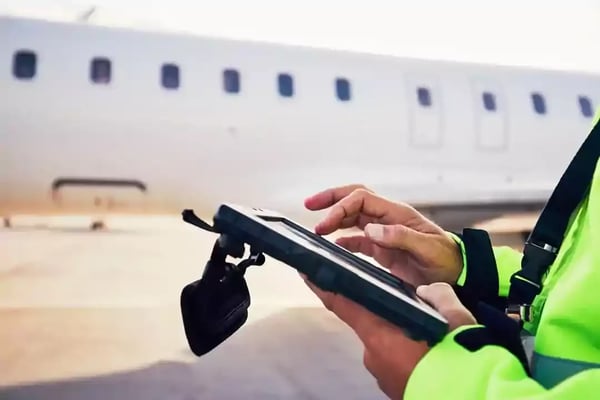Technological advancements continuously redefine industry standards, particularly in maintenance operations. One of the most groundbreaking developments reshaping this landscape is the transition from traditional, labour-intensive data exchange methods to an automated, digital system. This innovative approach is poised to set a new benchmark for collaboration between airlines and Maintenance, Repair,and Overhaul (MRO) providers during base maintenance processes.
THE PARADIGM SHIFT: FROM MANUAL TO AUTOMATED DATA EXCHANGE
Traditionally, the exchange of work package data has been a cumbersome process reliant on PDFs and manual entry. Airlines would submit initial and updated work packages in static formats, and MROs would return completed
work orders and defect findings through similar channels. This method not only required extensive manual input but also increased the likelihood of errors and operational inefficiencies, often leading to delays in aircraft readiness.
The leading-edge solution now emerging in the industry leverages digital formats to automate the entire data exchange process. At the core of this new process is data control facilitated by a sophisticated user interface (UI) that enables seamless export and import of data with minimal manual intervention. This UI allows both airline and MRO personnel to review, approve, or reject updates efficiently, ensuring that each organization maintains complete control over data entering their systems.
ADVANTAGES OF THE AUTOMATED APPROACH
This digital transformation offers a multitude of benefits that extend far beyond simplifying data transmission:
• Enhanced Efficiency: The automated system significantly reduces the time spent on data entry and verification, allowing airline representatives to focus on overseeing the maintenance operation on site.
• Increased Transparency: Real-time updates and a streamlined communication flow provide clearer visibility into the maintenance progress, enabling quicker responses to potential delays and ensuring that maintenance milestones are met on schedule.
• Improved Accuracy: With automatic data validation and integration, the risk of human error is minimized, enhancing the reliability of the maintenance records and the overall integrity of the aircraft’s service history

CHALLENGES AND STRATEGIC CONSIDERATIONS
While the shift to an automated, digital system represents a significant advancement, it also brings challenges that must be navigated thoughtfully. Key among these is the need for precise transformation to accommodate the diverse system architectures used by different airlines and MROs. Even when the parties use the same Maintenance & Engineering system, data is never compatible out of the box due to various ways the systems can be used, and data stored.
“With automatic data validation and integration, the risk of human error is minimized, enhancing the reliability of the maintenance records and the overall integrity of the aircraft’s service history.”
“…automated work package data exchange represents a monumental leap forward in aviation maintenance. This cutting-edge technology not only streamlines operations but also sets a new standard for efficiency, accuracy, and collaboration in the industry.”
Another consideration is the adoption of industry standards. ATA Spec2000 Chapter 18 provides an excellent framework and embracing such standards will be crucial for maximizing the benefits of automated data exchange.
CONCLUSION
The introduction of automated work package data exchange represents a monumental leap forward in aviation maintenance. This cutting-edge technology not only streamlines operations but also sets a new standard for efficiency, accuracy, and collaboration in the industry. As more organizations recognize the advantages of this innovative approach, it is set to become a fundamental component of modern aviation maintenance, paving the way for further advancements and redefining what is possible in the industry. This shift is not just about keeping pace with technology—it’s about leading the charge towards a more efficient, transparent, and reliable future in aviation maintenance.


 Henrik Ollus
Henrik Ollus
 If you are interested in knowing how you can improve your efficiency in maintenance operations, book a 30-minutes discovery call with us.
If you are interested in knowing how you can improve your efficiency in maintenance operations, book a 30-minutes discovery call with us.

